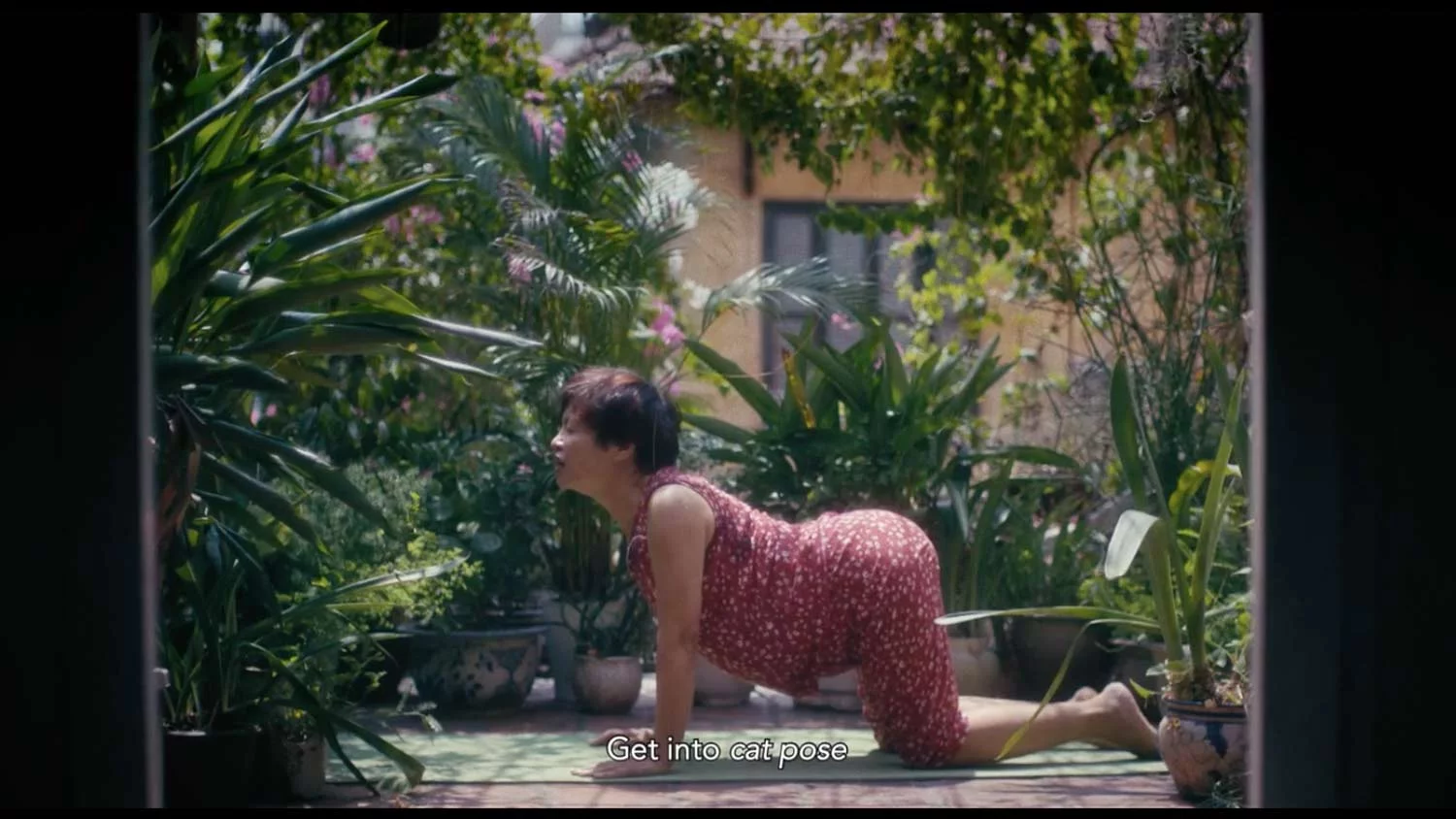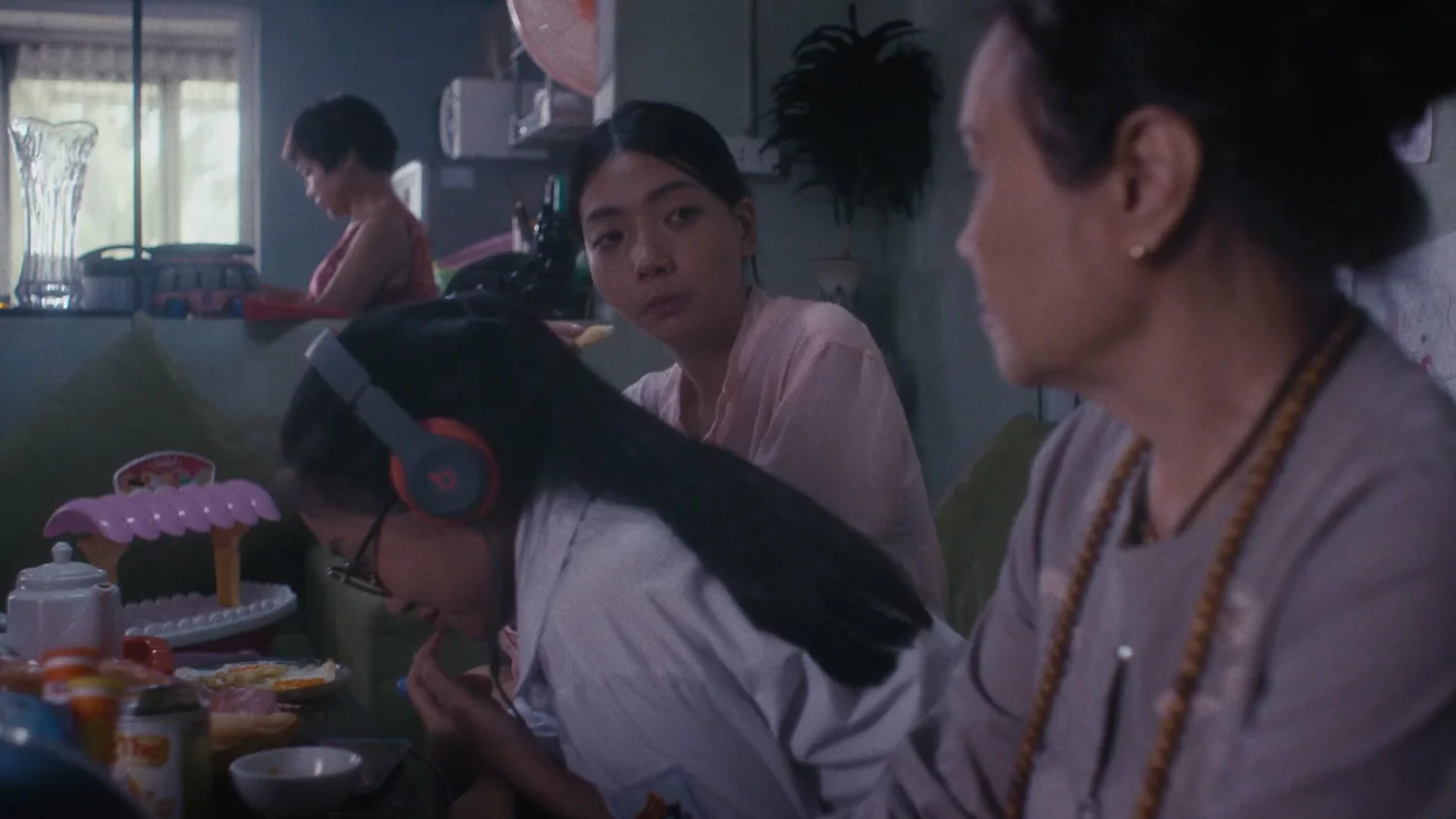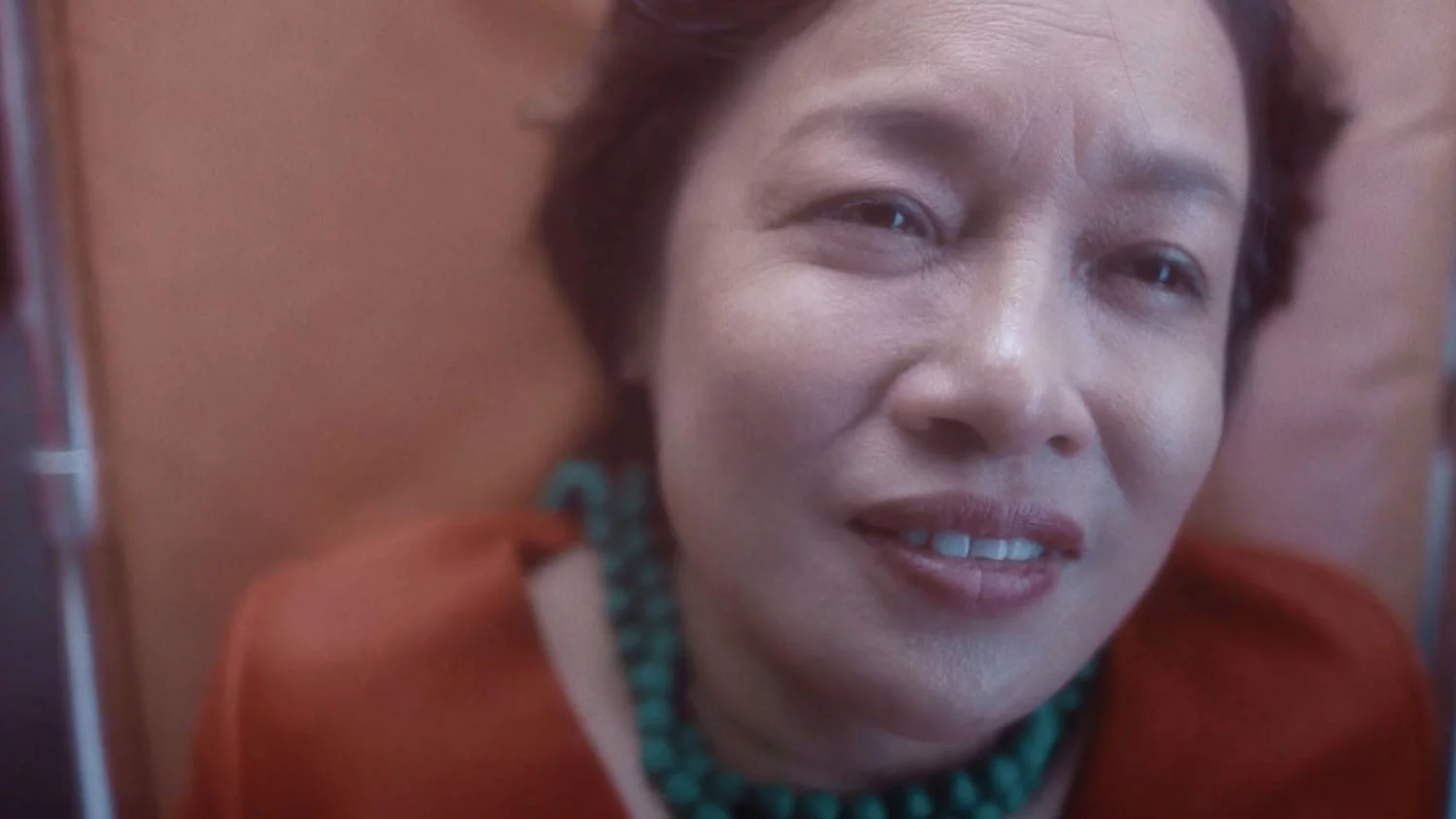Tradition in the 21st Century: Navigating the Southeast Asian Female Experience
By Joyce Ng

From the first shot we see the main character – beautifully framed with foliage – embodying a sense of serenity; she’s making time for herself. But she soon falls when attempting to do a particularly difficult yoga pose. We panic for a second because she is obscenely pregnant, but she seems fine. And then it gets worse, she starts crying.
Her inability to do that because she is pregnant reminds her of her place as a mother. The things that she is unable to do physically, and emotionally, due to these constraints. She cries, lying down on the floor at her predicament.
Throughout the short, we see the protagonist constantly reminded of her responsibilities as the centre of the family unit. And she tries to reconcile this with being her own independent person. These limitations are illustrated by the mise-en-scene of the film.

Protagonist having a karaoke party with her friends

Seeing her friends off at the end of the party
There is a scene in which she is dancing with her friends in her house. Though the place is lit differently, it is still a space where her responsibilities are apparent, but for a second, she dismisses them. The coloured and dancing lights change the mood of the house and she is having fun with her friends. This is however disrupted by the entrance of her supposed son-in-law who has come to pick his son up. When he leaves, the mood has changed and even though they attempt to have fun again, they are unable to do so because he has taken the microphone. A man has intruded into their space and because of his actions; he takes away their ability to be carefree. His presence also reminds her of her position as a mother to him, and a grandmother to his son. And it is right after that that the party ends and everyone goes home, leaving her at the door, framed and bounded by her home which representative of her role as a woman.
Interestingly enough, the short Sweet, Salty is a film about women and a story about men. Throughout the short, not once do we see her husband, but his presence is undeniably domineering in all aspects of her life. The women in the film are constantly talking about him, their conversations surround him and the actions that he has done and hence the consequences that they are left to deal with drive their actions.
We see the protagonist constantly framed within a frame, in that not only is she framed by the film, she is also framed by the mise-en-scene within it. This occurs whenever she is in the presence of people that remind her of the space she inhabits as a woman. She needs to use the bathroom, a necessary human function, and yet she cannot even do that in peace, as the small space is soon filled with her two daughters and her grandson. The framing of the toilet can be seen as the limitations placed onto her by her role as a mother and a grandmother. She is overwhelmed by the central position she occupies and we see her physically remove herself from the frame.

The protagonist is in the kitchen and her daughters and mother are in the living room
Even when she leaves the overcrowded toilet, she is next framed by the kitchen wall, which puts her constantly in the frame with her daughters – a reminder of the boundaries that she has to function under. It is no coincidence that in these particular scenes, the conversation revolves around becoming a mother and the consequences of his infidelity.
We also see the protagonist going to a facial, and even dressing up to face her husband’s mistress. While one can say that this is a form of empowerment, it comes from the need to be beautiful in order to win over a man. This is a constant struggle many women deal with over the entirety of their lives, the dichotomy between wanting to feel beautiful through empowerment and ‘doing things from themselves’. However, at the end of the day, they want the attention of men, and perhaps in that, they feel empowered. But at the same time, if their form of validation comes from men, can it truly be empowerment? The focus on beauty, in spite of its implications, is telling of how complicated the structure of the life a woman is in the 21st Century, paerticularly as they attempt to reconcile both feminism and tradition.
In Asian societies, tradition is still at the forefront of our psyches, and attempts to reconcile that with more contemporary attitudes can result in a dissonance. The main character is troubled and angry for a lot of the film, and she has every right to be. But at the end of the film, when her husband is so close, we see her moved to tears and the comfort and happiness that he brings. Perhaps, in her mind, she has somehow won over the heart of her husband by having a boy.

Protagonist crying at her inability to strike a yoga pose

She hears the voice of her husband and shed tears of joy
In this sense, we see the contrast between her character throughout the film and in the last scene and comment on how men are her source of pain, as seen in her husband’s betrayal, and the source of her happiness, as seen in her euphoria at the end and the fact that it was brought by her having a son. Furthermore, the final scene and the first scene are parallels. In one, she cries because of her sadness, and another, out of happiness. This represents the endless cycle of struggle that women must face for their entire lives regarding their place in society, in a family unit, and how that translates into the person they are and the actions they perform.
– Joyce Ng